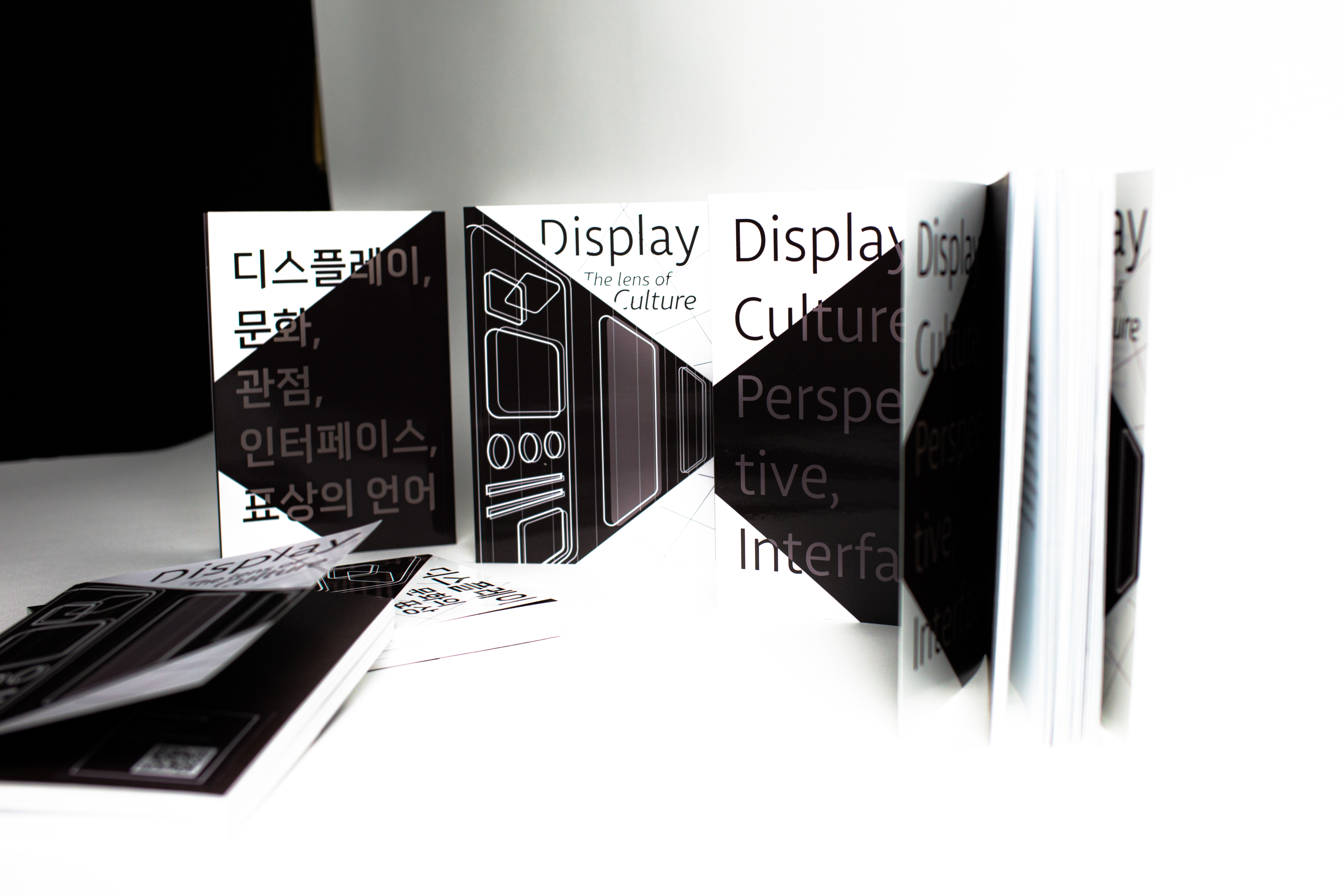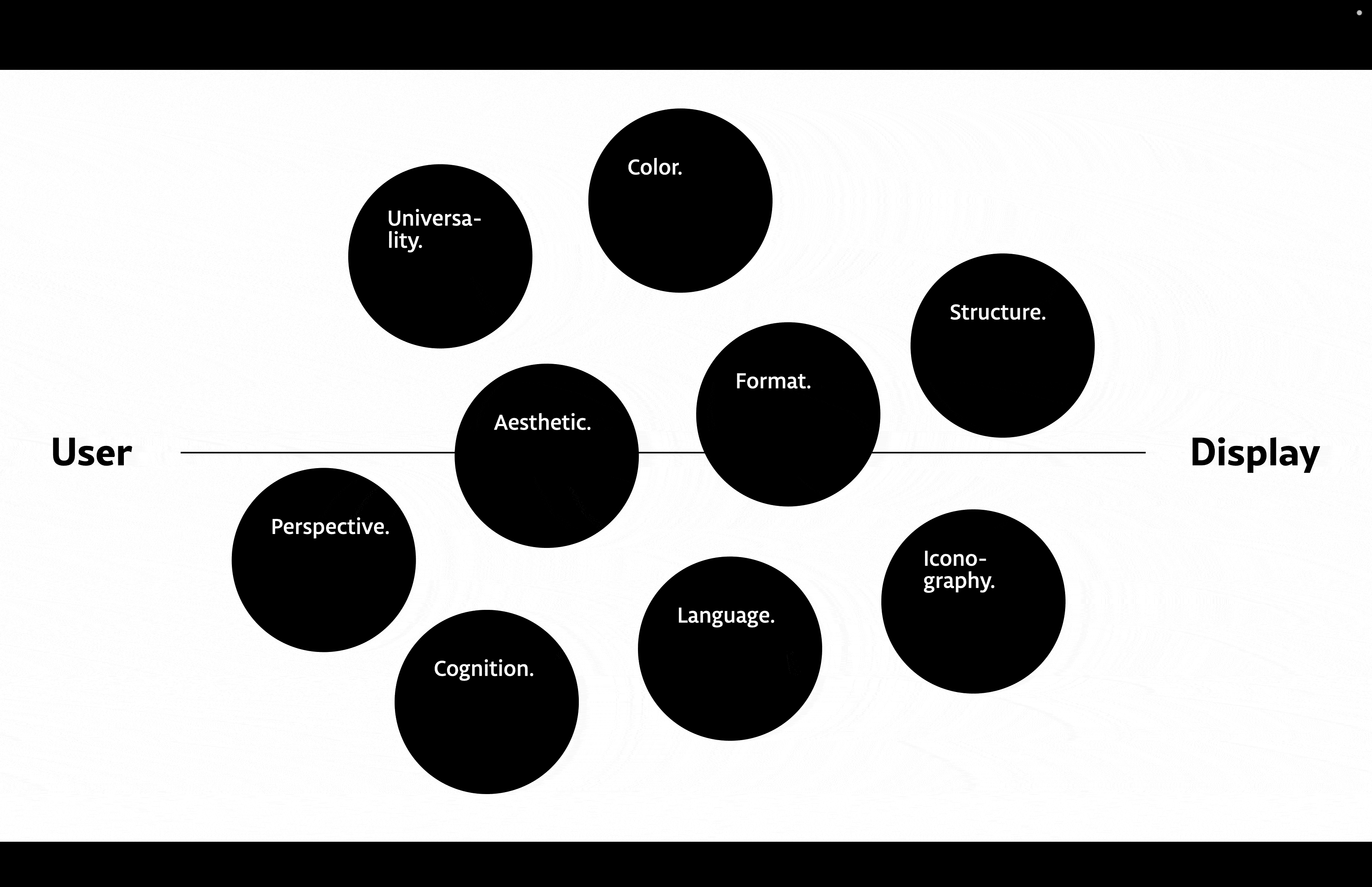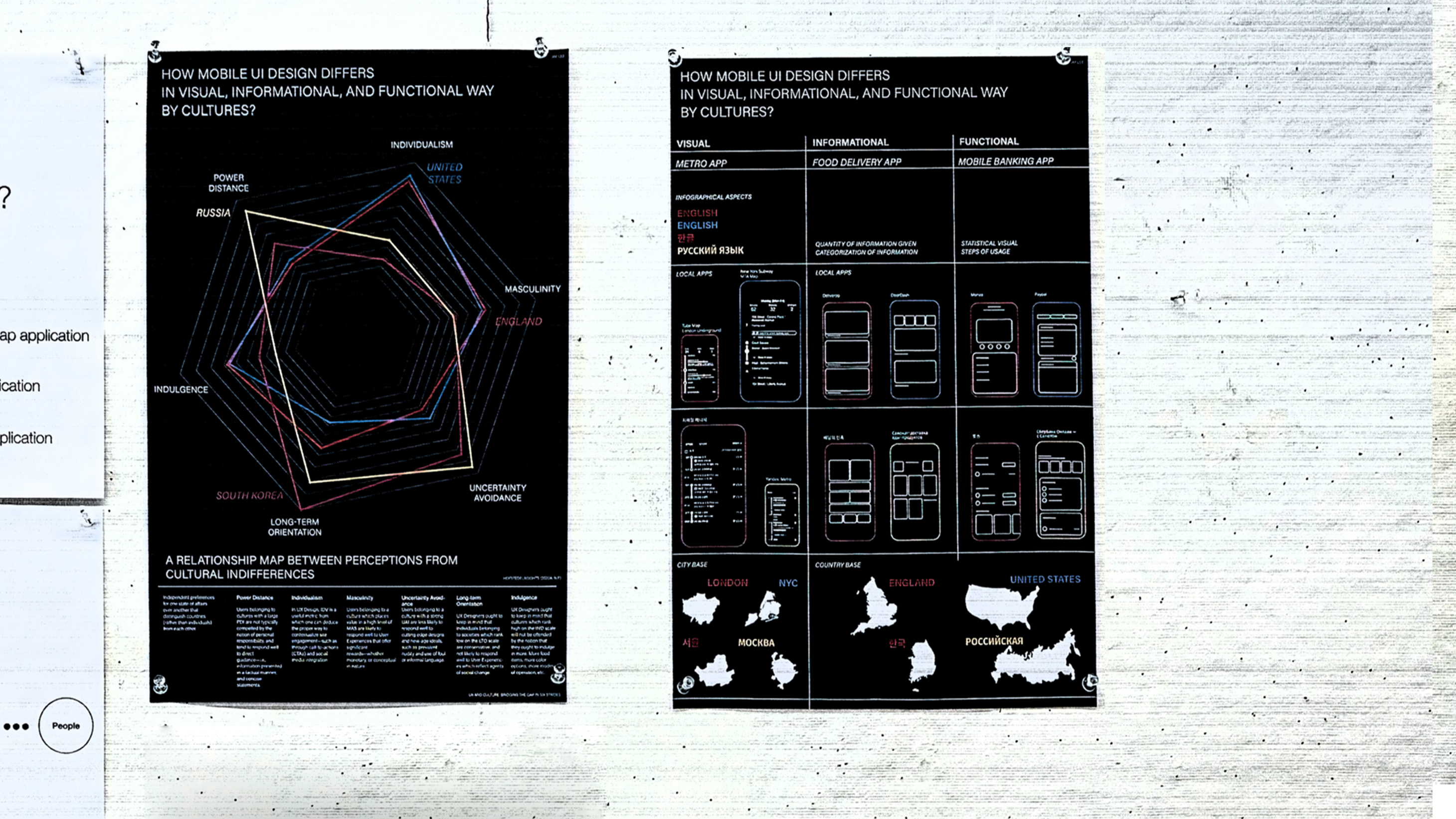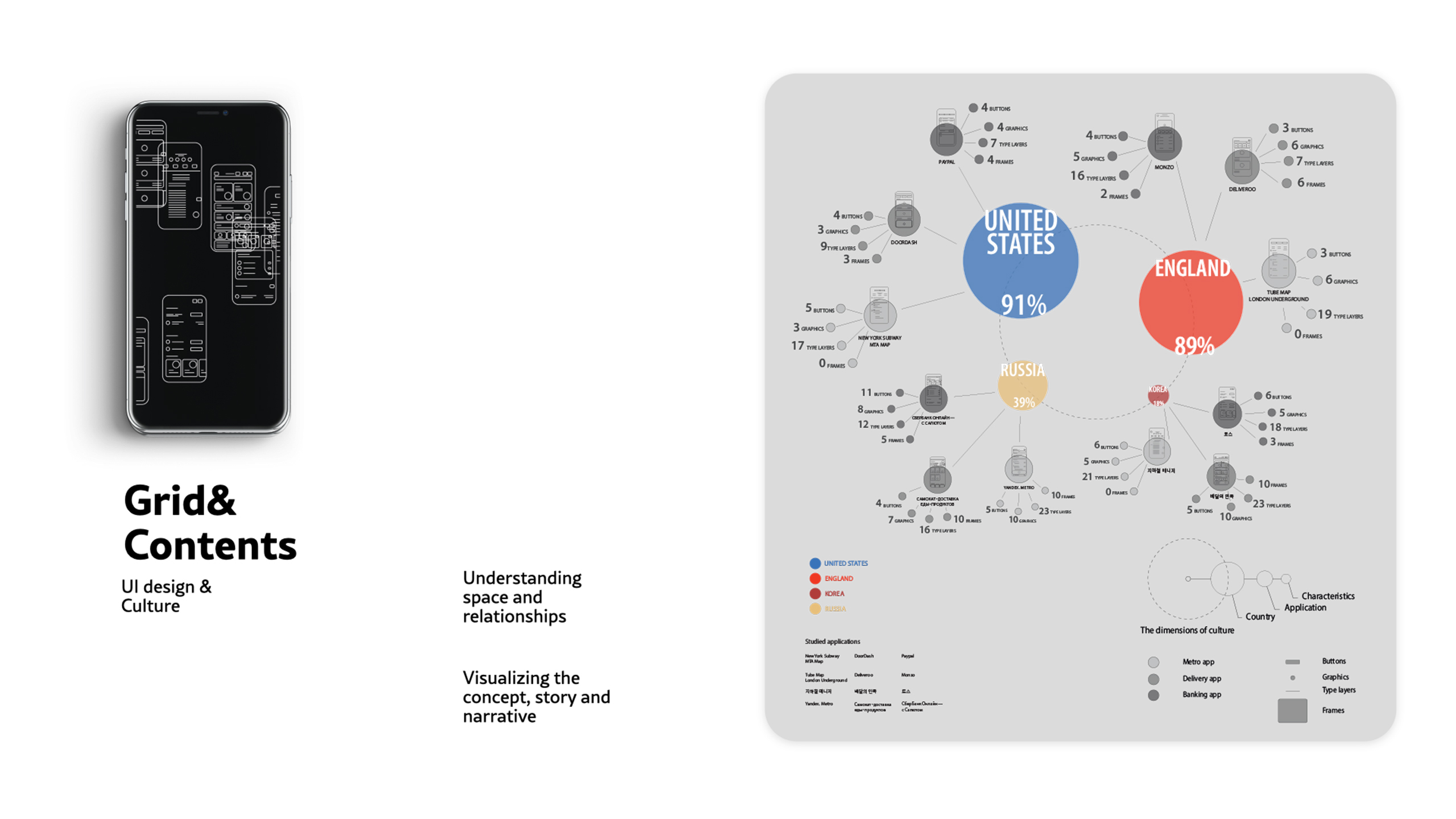Display, the lens of culture
Jaehyuk Lee
As mobile devices become more common, usability is becoming some of the most important factors in the design of a successful User Experience (UX) through User Interface (UI). How people think and interact with the subject or surroundings are closely dependent on the individual experience shaped by their cultural backgrounds and language structures. This thesis suggests the need for a new approach to interface design that reflects different cultural cognition. Understanding the different ways we understand information, interact with our surroundings and situations, and our expectations of functionalities, can produce a much more optimized experience through more intuitive interaction with an interface.

Overlapping Cultures
Cultural overlaps provoke new findings. Those findings start from Display - the lens of the information, and then go a little deeper into culture and perspective. In the end back to the surface, the interface where cultural learnings represented.

Display the lens of culture
The book is designed in two different language, Korean and English which depicts the difference of culture, language and visual cognition.
User, Display and culture
Rather than looking at the surface of UI design, the core idea is to find the overlap of users and culture where they belong. Understanding those cultural perspectives is the key to the intuitive experience and bringing ubiquity in life.
Cultural perception in UI
Cultural perception is the unique way how the visual is read, differs by culture and way of thinking which is related to the language structure.
Icons and universality
Icons can be perplexing across the operating system and not as universal as it is thought to be.